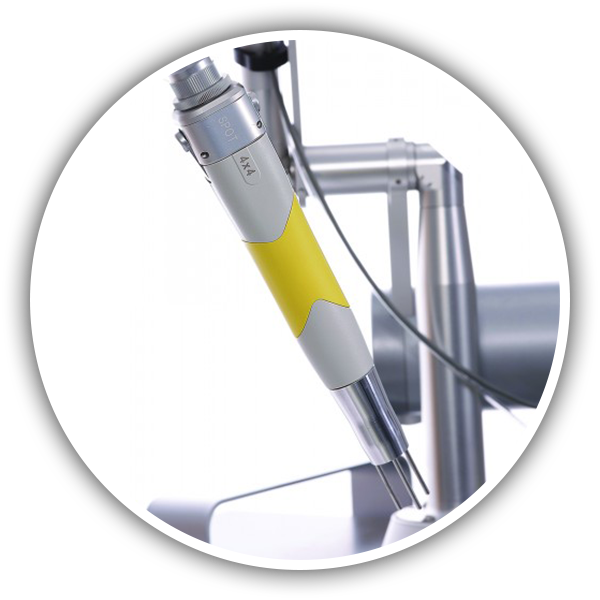Understanding Tattoo Removal Side Effects: Key Insights
Laser tattoo removal has become the most effective and widely used method for getting rid of unwanted ink. While modern technology has made the process safer and more efficient, it is important for individuals considering this treatment to understand the potential risks and tattoo removal side effects involved. At Black Sage Laser, we prioritize client education and safety, ensuring that you are well-informed about every aspect of the procedure.
How Laser Tattoo Removal Works

Understanding the common tattoo removal side effects can help you manage your expectations and prepare adequately.
Laser tattoo removal uses high-intensity light pulses to break down tattoo pigments into smaller particles. The body’s immune system then gradually eliminates these fragments over time. While this technique is highly effective, it does have potential side effects, especially if proper aftercare is not followed.
Common Side Effects of Laser Tattoo Removal
It’s vital to recognize how tattoo removal side effects manifest, as this knowledge can ease any concerns you may have.
Most tattoo removal side effects are temporary and subside within a few weeks. However, understanding these potential tattoo removal side effects can help you prepare for the treatment and ensure proper healing.
1. Redness and Swelling
Taking proactive steps can help mitigate tattoo removal side effects and promote better healing.
One of the most common laser tattoo removal side effects is temporary redness and swelling at the treated site. The laser energy causes micro-damage to the skin, triggering an inflammatory response. This is a normal part of the healing process and typically resolves within a few days.
How to Manage:
- Apply an ice pack to the treated area to reduce swelling.
- Avoid excessive heat, such as hot showers or saunas, for the first 24-48 hours.
2. Blistering
Blisters may form as the skin reacts to the laser’s heat. This is more common in individuals with sensitive skin or those undergoing aggressive treatments for dark or stubborn tattoos.
How to Manage:
- Do not pop blisters, as this can lead to infections.
- Keep the area clean and apply an antibiotic ointment as recommended by your specialist.
3. Scabbing and Crusting: Understanding Tattoo Removal Side Effects
How to Manage:
- Avoid picking or scratching scabs to prevent scarring.
- Keep the area moisturized with a recommended ointment.
4. Temporary Skin Discoloration
Some patients may experience temporary hyperpigmentation (darkening of the skin) or hypopigmentation (lightening of the skin). This occurs when the laser affects the melanin in the skin.
How to Manage:
Being aware of tattoo removal side effects like itching and dryness can help you stay prepared and comfortable during the healing process.
- Hyperpigmentation typically fades over time, but using sunscreen on the area can help.
- Hypopigmentation may take longer to resolve, especially in individuals with darker skin tones.
5. Itching and Dryness
As the skin heals, some individuals may experience itching or dryness in the treated area.
How to Manage:
- Apply a fragrance-free moisturizer to soothe the skin.
- Avoid scratching to prevent irritation and infection.
Less Common but Serious Risks
While rare, some side effects of laser tattoo removal may require medical attention. Understanding these risks helps ensure you take the necessary precautions.
1. Infection
Although uncommon, infections can occur if the treated area is not properly cared for.
How to Prevent:
- Follow aftercare instructions carefully.
- Keep the area clean and avoid touching it with unwashed hands.
2. Scarring
Scarring is rare when laser tattoo removal is performed correctly, but it can happen if blisters or scabs are picked at or if aftercare instructions are not followed.
How to Prevent:
- Allow the skin to heal naturally without interference.
- Use healing ointments as recommended by your provider.
3. Changes in Skin Texture
In some cases, the treated skin may have a slightly different texture after healing.
How to Prevent:
- Keeping the skin moisturized and protected from the sun can help.
- Consulting a professional for proper aftercare can reduce this risk.
How to Minimize Tattoo Removal Side Effects
The best way to reduce the risk of side effects is to follow proper pre- and post-treatment care. Here are some essential tips:
Pre-Treatment Care
- Avoid sun exposure before your appointment, as tanned skin is more prone to complications.
- Stay hydrated and maintain a healthy diet to support your immune system.
- Inform your provider of any medications you are taking, as some can increase skin sensitivity.
Post-Treatment Care
- Keep the treated area clean and dry for the first 24 hours.
- Apply healing ointments and avoid direct sun exposure.
- Follow all aftercare instructions provided by your specialist.
Is Laser Tattoo Removal Safe for Everyone?
Laser tattoo removal is safe for most individuals, but some factors can affect how your skin reacts to the treatment:
- Skin Type: Darker skin tones may have a higher risk of pigmentation changes.
- Tattoo Ink Colors: Certain colors, like green and blue, are more challenging to remove and may require more sessions.
- Medical Conditions: Individuals with skin conditions or a history of keloid scarring should consult a specialist before undergoing treatment.
- For a broader clinical overview of tattoo removal risks and safety, visit this Mayo Clinic resource on tattoo removal.
Conclusion
While laser tattoo removal is a safe and effective method for removing unwanted ink, understanding the potential risks and side effects is essential for a smooth recovery. At Black Sage Laser, we prioritize client safety and provide comprehensive aftercare guidance to minimize side effects.
If you’re considering laser tattoo removal and want expert advice tailored to your skin type and tattoo, contact Black Sage Laser today for a consultation. Let us help you achieve clear, ink-free skin with confidence!
